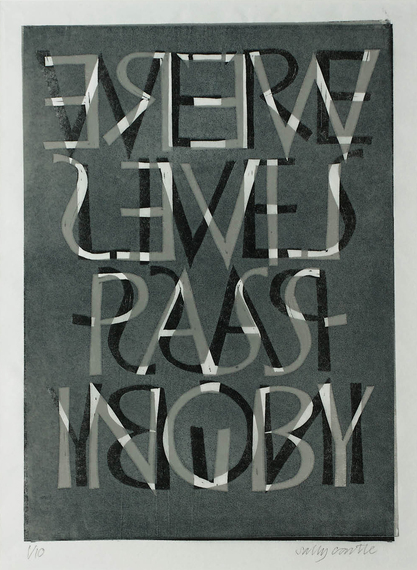As a graphic designer and magazine art director I am regularly supplied with journalist's copy that I then typeset and incorporate as part of a page layout. I often use typefaces that are part of a carefully considered template that presents the message to the reader in a utilitarian way. After all letterforms are one of the most important means of communication for a graphic designer.
However, for a lettering artist those set of rules do not apply. Hand lettering in its many forms can powerfully convey emotions and subliminal information that more restrained forms of typography generally communicate in a more limited way.
So when the Letter Exchange, an organization of lettering artists and 26, an organization of creative writers decided to collaborate to on a project to celebrate their respective birth dates, it was destined to be a purely experimental undertaking.
The groups organized to meet in the cramped basement of a London pub, and with an element of theatre performed a modern version of an ancient Roman ritual. A blunt kitchen knife was inserted into a large dictionary 26 times, its tip choosing a word from each letter of the alphabet in turn. Twenty-six pairs of lettering artists and writers were randomly paired and given one word each to work with. A final couple were given the challenging task of weaving all the words together in a final piece.
This arbitrary process has produced a wildly varied body of work, with a variety of methods and interpretations of letterforms. The materials also used range from paper, ink, lino, glass, different metals, and in some cases the words have been literally set in stone. On the other end of the spectrum words are presented on notepaper, and another is purely digital. Whatever the medium, the most successful work on view conveyed not only the writer's words, but visually add to describing their true meaning. In some cases this artistic reinterpretation of the written word is taken further, to the sacrifice of legibility; but this is very much in keeping with the spirit of this project.
The word 'wave' was the starting point for the piece Wave with words by Rob Self-Pierson in collaboration with lettering artist Sally Castle. It's a good example of a sentence that has been interpreted to visually capture their meaning. The letterforms not only give a sensation of the movement of waves, but also are in themselves passing each other by. Castle experimented with different types of papers and found that printing on both sides of a semi-transparent Japanese paper gave some unforeseen results where the letters appear to touch but not quite meet, seemingly appropriate for the wording.
The expression of words and what they look like is now largely dictated to us by keyboards and touch screens, and although the computer in some cases has been used as a tool, the work in the exhibition is really about the material world and the free expression of the letterform. Perhaps exploring the DNA of language as the title suggests, will lead to further collaborations between 26 and The Letter Exchange. After all typographic experimentation has played a part in the evolution of the diverse range of letterforms that we have today.
This post was first published in Crafts magazine (March/April 2014)
26 Words: an exhibition exploring the DNA of language
Free Word Centre, London EC1R 3GA
26 November-31 January 2014
26 Words is touring. Click here for details

